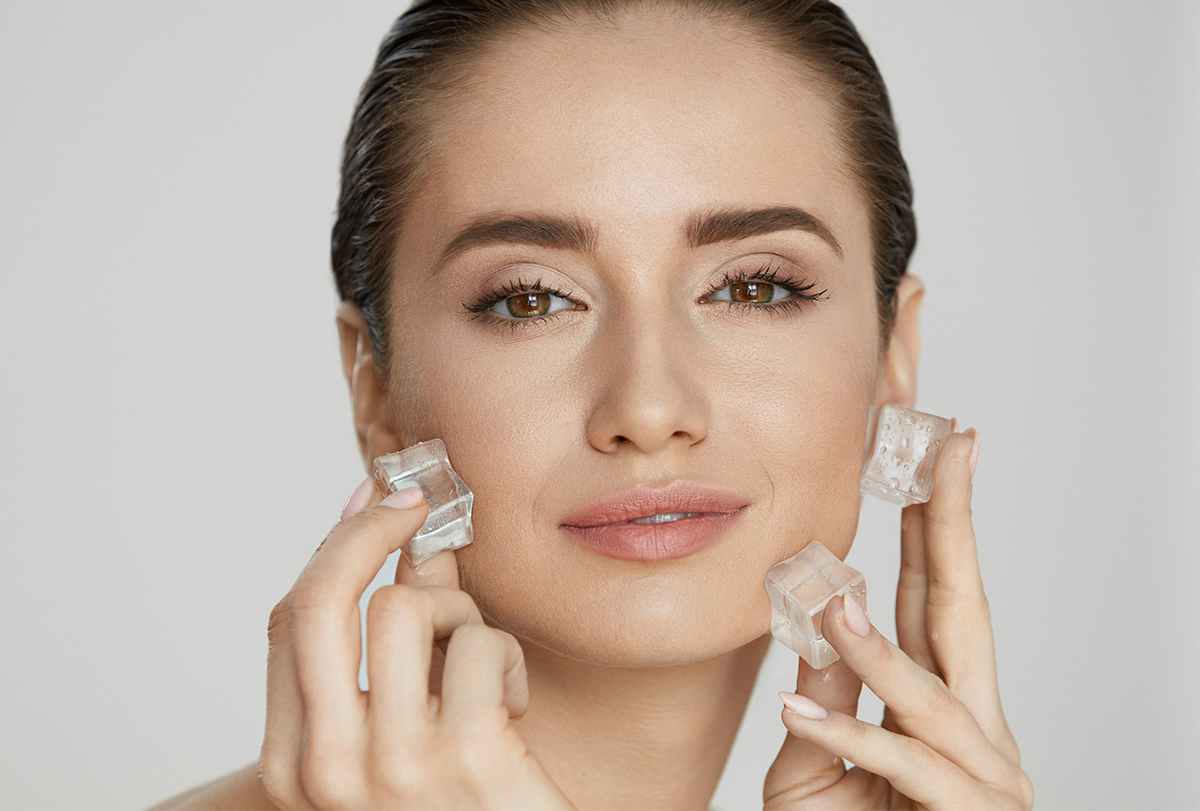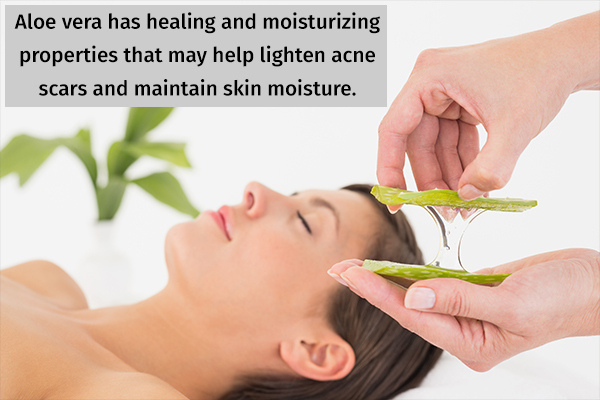In this article:
The sudden appearance of pimples or zits can worry anybody, especially if they pop up on your face.

If that wasn’t enough, stressing about the problem often makes it worse by causing more pimples. This is because stress triggers the release of cortisol hormone in the body, which overactivates the oil glands under your skin to produce more sebum.
The excess sebum, along with dead cells and other impurities, accumulates on your skin surface and gradually settles deep into the pores, clogging them.
Clogged pores breed acne-causing bacteria that feed on the cellular debris and sebum collected inside them. The bacterial overgrowth takes the form of an infection, which causes an inflammatory response at the affected site.
It is this underlying inflammation that causes swelling, redness, and pimple formation at the clogged pore. The redness of the pimple makes it more noticeable.
Since the redness is a sign of underlying inflammation, the only way to relieve it is by addressing the root cause. Read on to know how.
Home Remedies to Reduce Pimple Redness
Here are some simple and safe remedies that can help curb the redness of your pimple by soothing the underlying inflammation.
Note: Patch tests are recommended before applying any of the listed home remedies to rule out any adverse or allergic skin reactions.
1. Ice therapy
The application of cold temperature helps slow down blood circulation in the area by constricting your blood vessels. As a result, the skin inflammation dissipates to a certain degree, which makes your pimple less sore, red, and noticeable.
However, this effect is only temporary, so you need to repeat the application several times a day until the redness subsides.
How to use:
- Wrap a few clear ice cubes in a thin, clean cloth.
- Gently place it over the acne lesion for a minute, applying minimal pressure.
- Repeat the process after 10 minutes. Do this at least twice a day or more if you want faster results.
Note: Don’t apply the ice directly or for too long as it can cause cellular damage and even frostbites.
2. Cold green tea bag compress

Like the ice pack, this is a type of cold compress that incorporates the skin benefits of green tea.
The cold temperature and caffeine in green tea cause constriction of the blood vessels, reducing the swelling and redness. Plus, green tea is full of tannins, which are antioxidants that can help calm the inflamed skin. (1)
How to use:
- Soak a bag of green tea in a cup of water.
- Mix 1 tablespoon of honey in it for its additional skin-calming properties.
- Place the cup in the freezer for 10 minutes.
- Gently press the chilled green tea bag over the pimple for 15–20 seconds. Rest the skin for a few minutes before repeating the process.
- Do this repeatedly for up to 5 minutes, but don’t overdo it.
3. Tea tree oil
Tea tree oil is an essential skin care ingredient used widely for oily and acne-prone skin. Its antimicrobial properties help kill acne-causing bacteria in order to cure the infection and relieve its inflammatory symptoms, including pimple redness. (2)
How to use:
- Mix ½ tablespoon of fuller’s earth, 2–3 drops of tea tree oil, and water to make a smooth paste.
- Evenly apply the mixture to your breakout area.
- Leave it on for about 20 minutes and then rinse it off.
Note: Tea tree oil is too harsh at its original potency and can severely damage your skin if applied directly. Thus, it is essential that you dilute it with water before using it topically.
4. Aloe vera massage

Fresh aloe vera can help calm your red, painfully inflamed pimples due to its inherent antibacterial and anti-inflammatory properties. Its healing and moisturizing properties may help lighten acne scars and maintain skin moisture.
How to use:
- Slice open a fresh aloe vera leaf to extract the gel inside it. You can use this gel alone or mix it with 1 teaspoon of lemon juice for added benefits.
- Gently massage this gel on the acne-ridden skin using clean fingers.
- Let it dry naturally for 15 minutes before rinsing it off with lukewarm water.
- Pat your skin dry with a soft clean cloth.
5. Cucumber water toner
Cucumber water is loaded with vitamins A, C, and E, all of which stimulate skin cell turnover to quickly heal your red angry zits.
Plus, its cooling properties help reduce the underlying inflammation to flatten your pimple while relieving the redness and irritation around it. The cooling effect also helps minimize large open pores to prevent future breakouts.
Cucumber water is abundant in silica, which helps replenish the skin and acts as an anti-acne, antiaging, and antiwrinkle ingredient. Plus, it helps balance your skin pH level to soothe irritated skin.
How to use:
- Mix ¼ cup of fresh cucumber juice, 2 tablespoons of water or rosewater, and ½ teaspoon of vitamin E oil.
- Refrigerate the mixture in a bottle for a few hours.
- Wash your face and let it air-dry.
- Soak a cotton pad in the cool cucumber water and lightly dab it on the inflamed skin. Use it daily in place of your regular toner until the condition improves.
Self-Care Measures to Reduce Pimple Redness
The following tips can help manage and reduce pimple redness.
1. Do not pop that zit
Squeezing or popping the lesion might seem like the easiest and quickest way to get rid of an angry pimple, but it will only push the infection deeper, spread it to the surrounding areas, and injure the skin, potentially leaving a scar.
Be gentle with your skin, don’t pick at the pimple unnecessarily, and let it heal naturally.
2. Maintain proper skin hygiene

Negligent skin hygiene paves the way for clogged pores and a bad case of acne.
However, excessive face washing can rip the natural lipids from your skin, making it dry. This will trigger the oil glands under your skin to overproduce sebum to make up for the dryness. The excess sebum will in turn clog your pores and worsen your acne.
So, while it is important to keep your skin clean, overdoing it can be counterproductive. Wash your face no more than twice a day and after sweating as sweat can also collect inside your pores to make acne worse.
Preferably use lukewarm water and cleansers with ingredients that provide gentle skin exfoliation to unclog your pores and relieve the inflammation to a certain degree, such as salicylic or glycolic acid.
3. Avoid stress and anxiety
Stress and anxiety are known triggers for acne breakouts. So, it is important to keep your mind calm through various relaxation techniques such as yoga, tai chi, deep breathing/meditation, and other activities that give you peace and pleasure.
4. Stay hydrated
Drink at least 7–8 glasses of water every day to keep your skin hydrated from within. Dry skin leads to excess sebum production, which can clog pores and lead to more pimples.
5. Diet

Excessive consumption of sugary or greasy foods can trigger and worsen acne breakouts. So, it is recommended that you follow a well-balanced, nutritious diet rich in vitamins, proteins, and essential fats that nourish and repair your acne-ridden skin.
Also, up your intake of antioxidant-rich foods that can help calm the skin inflammation to reduce pimple redness.
6. Do not over-exfoliate
Exfoliation helps get rid of dead skin cells. However, overexfoliation can cause skin dryness, redness, and swelling. It rids the skin’s natural ability to defend against external environmental factors, leading to vulnerable skin prone to breakouts.
7. Wash your makeup before going to bed
Heavy, full-coverage cosmetics settle inside and clog skin pores. So, people with acne-prone skin should always use light makeup and skin products that are labeled comedogenic, which implies that they don’t clog skin pores.
The best thing to do is to avoid wearing makeup during an active breakout, but if you must, make sure to wipe it off before going to sleep. This will allow your skin to breathe and recover overnight.
How Long Do Red Pimples Last?

It usually takes 7–10 days for a red pimple to subside.
Final Word
Pimples are a common skin problem that affects everyone, regardless of age, gender, or skin type. An occasional pimple here and there barely makes a difference, but people who are prone to severe or frequent breakouts can have a hard time dealing with this problem.
These lesions may not pose a threat to your physical health, but having your face riddled with red swollen bumps can hamper your self-confidence and can be a source of psychological stress.
Stress further aggravates the condition, resulting in a never-ending loop. So instead of worrying, seek treatment from a dermatologist. Plus, try the above-listed home remedies and self-care tips as adjunctive measures to improve the efficacy of the acne treatment.
The remedies are especially effective for reducing the redness of stray pimples or mild to moderate breakouts. If you have severe acne, only use the remedies if approved by your dermatologist.

- Was this article helpful?
- YES, THANKS!NOT REALLY


